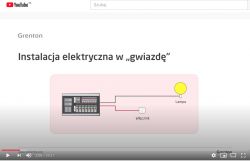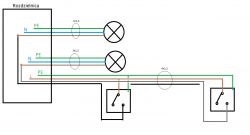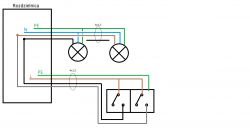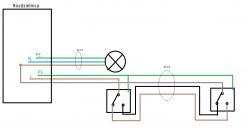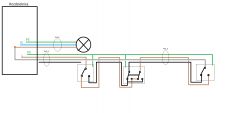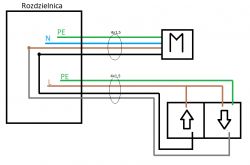I would like to understand the star wiring diagram.
I understand that the focal point is the switchboard and for example: I have a light point in the living room: I pull the cable (3x1.5) from this point to the switchboard. Then I pull the cable (3x1.5) from the switch box of this light point also to the switchboard and connect both cables. I connect the switch and nothing, because there is no current in this circuit ... to handle it, I have to pull a 3x1.5 cable with electricity from the switchgear to the switch? And if I have, for example, two points of light, of course, I repeat what I wrote above, but how with the "current" cable each time from the switchgear a separate cable with electricity for each switch separately? Can I pull the cable from switch to switch?
greetings,
Marcin
I understand that the focal point is the switchboard and for example: I have a light point in the living room: I pull the cable (3x1.5) from this point to the switchboard. Then I pull the cable (3x1.5) from the switch box of this light point also to the switchboard and connect both cables. I connect the switch and nothing, because there is no current in this circuit ... to handle it, I have to pull a 3x1.5 cable with electricity from the switchgear to the switch? And if I have, for example, two points of light, of course, I repeat what I wrote above, but how with the "current" cable each time from the switchgear a separate cable with electricity for each switch separately? Can I pull the cable from switch to switch?
greetings,
Marcin





